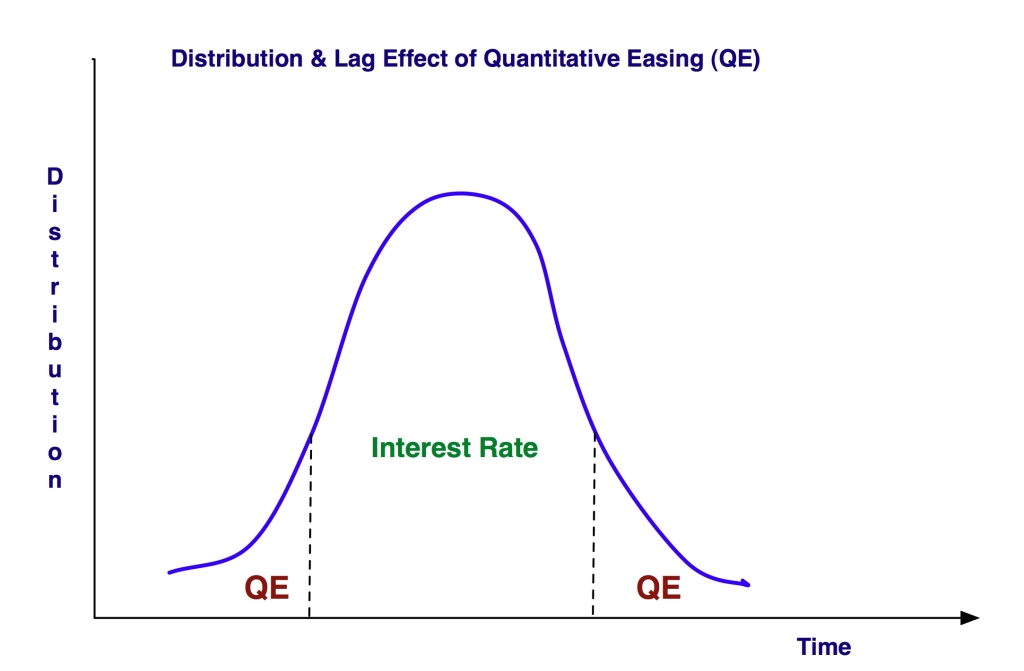Making sense of the distribution and lag effects
Let us explain the problem or rather challenge of choosing between Quantitative Easing (QE) and an Interest Rate reduction to stimulate economic activity, with reference to the Bell Curve diagramme above:
There are two major factors at play here:
- Distribution
- Time
With a bout of QE, the effect feeds into the margins of theBellcurve and it takes time for the distribution network (money supply chain) to filter the new enhanced supply into the economy at large. So there is both a distribution and time lag effect with QE.
On the other hand, with an immediate Interest Rate reduction, the effect is to cover the larger middle ground of the Bellc urve more instantly. Yes, it does depend on your wealth and debt holder structure too, but both borrowers and savers feel the effect more immediately.
But, with Interest Rates currently so low, this option is not really that feasible. With inflation running at between 2 – 5% depending on which side of the pond you are, effectively savers are paying an additional ‘tax contribution’ to the Treasury by this stealth means.
So we are back to the scenario of a tax on the stock (or wealth) of the economy, as most flows have dried up.
Therefore, join the happy queue over here.
theMarketSoul ©2011



No comments:
Post a Comment